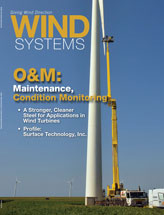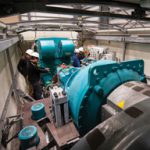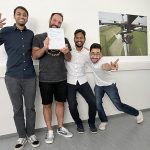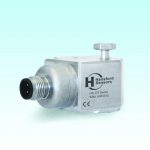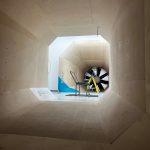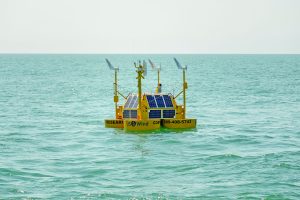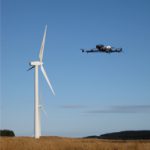A team of researchers at Sandia National Laboratories (SNL) and the National Renewable Energy Laboratory (NREL) are planning a critical experiment at Sandia’s Scaled Wind Farm Technology (SWiFT) facility to investigate the use of wind turbine yaw control to direct wakes, a promising approach to increase power production in wind plants. During the multi-month field campaign, researchers will collect data to improve both high-fidelity wind plant simulation software and demonstrate novel control concepts. The industry could then develop advanced controllers for deployment in commercial wind farms to increase power production.
Capturing detailed characteristics of the wake produced by the upwind turbine is a challenging requirement of the campaign. To confirm the model predictions, researchers need long-term continuous measurements of the wake velocity profile downwind of the turbine. The team partnered with the Technical University of Denmark (DTU) Wind Energy Department to leverage their wake measurement expertise and their custom-built SpinnerLidar. Lidar, or light detection and ranging, uses a scanning laser beam to measure wind velocity, and it does so at the resolution required for the SWiFT experiment.
 Before deploying the SpinnerLidar, the research team scrutinized the instrument configuration and developed appropriate data analysis methods. To account for the many variables and complex calculations, the team developed a detailed virtual Lidar model to interrogate data sets from computational fluid dynamics (CFD) simulations of the SWiFT turbines. With the tool, the team is confident in its ability to reduce risk and uncertainty in the instrument, experimental configuration, and data processing before the instrument is deployed at the site, saving both time and money.
Before deploying the SpinnerLidar, the research team scrutinized the instrument configuration and developed appropriate data analysis methods. To account for the many variables and complex calculations, the team developed a detailed virtual Lidar model to interrogate data sets from computational fluid dynamics (CFD) simulations of the SWiFT turbines. With the tool, the team is confident in its ability to reduce risk and uncertainty in the instrument, experimental configuration, and data processing before the instrument is deployed at the site, saving both time and money.
The animation depicted here in a screen-capture image was created from the virtual Lidar model and CFD simulation to depict the Lidar scanning pattern that will be used for the Wake Steering Experiment. The video depicts one of the SWiFT turbines operating in real time and scale while the DTU SpinnerLidar scans a rosette pattern at five distances downstream (1-5 rotor diameters). The contour surfaces at each scanning distance represent the average line-of-sight velocity interpolated from the SpinnerLidar virtual model interrogation of the CFD simulation, estimating the resolution of experimental data that can be expected. The black irregular shape at each distance represents the output of an image-processing method used to determine the center of the wake produced by the turbine. This wake location in time and space will be a key data set to assess and improve the wake steering control model —one of the primary objectives of the experiment. All data from the upcoming experiment will be made public through the DOE Atmosphere to Electron (A2e) Data Archive Portal for other researchers to analyze for their own models and tools.
Source: Sandia National Laboratories
For more information, go to www.sandia.gov.



















